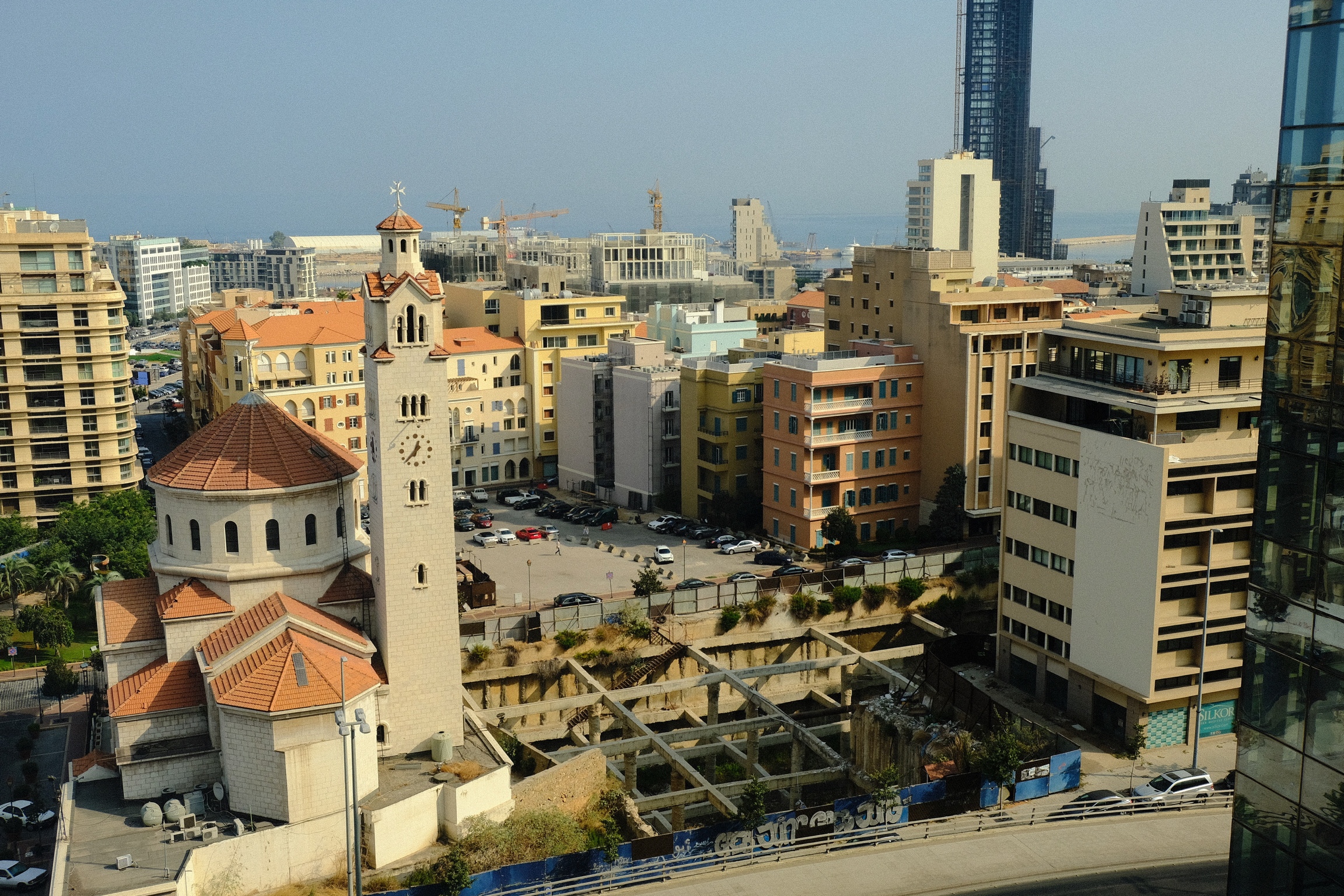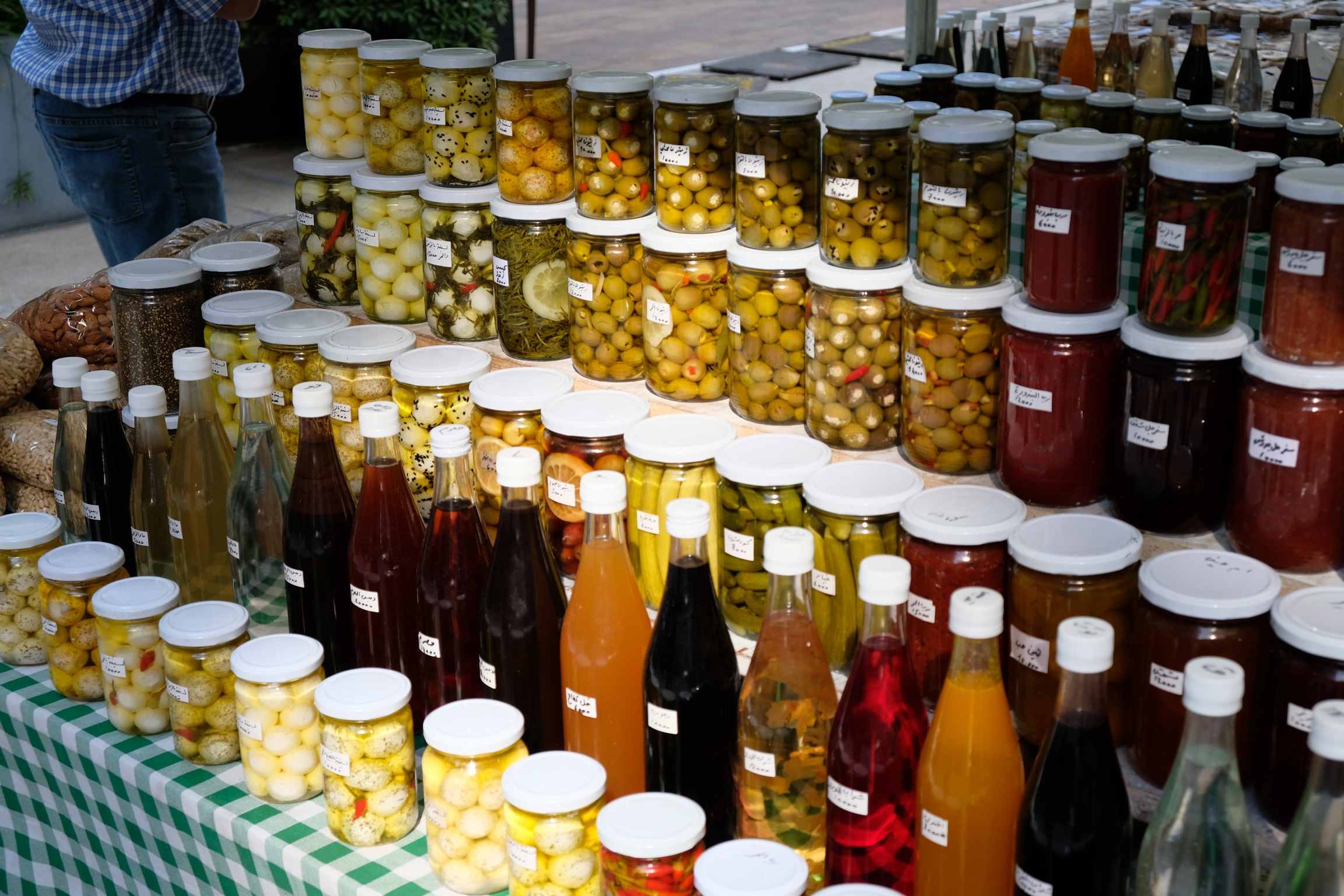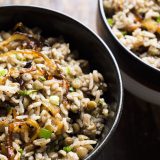The reality of many culinary destinations is exactly what was in the mind’s eye: the streets of Oaxaca, the ramen of Tokyo, the grilled satays of Dakar. Beirut, however, offers another universe entirely apart from expectation. Instead of a dangerous, war-torn city, one finds KFC billboards, epic traffic jams, trendy bakeries alongside buildings pockmarked from the civil war, and streets filled with Shia Muslims celebrating Ashura, an Islamic holy day.
Built on hills flowing down to the Mediterranean, Beirut is whitewashed and hodgepodge, a confusing mix of military checkpoints and Mercedes dealerships. It’s the food that draws the place together: simple, fresh and comforting.
My visit started with a seaside dinner north of town with art dealer and cookbook author Anissa Helou. At restaurant Jammal, set in a picturesque cove, we ate small fried fish whole and raw shrimp on ice, as well as classic dishes such as fattoush made with fresh za’atar leaves (a wild thyme), radish, mint, sumac, lettuce and bite-size pieces of pita bread.
The next morning was an awe- inspiring visit to Al Soussi, arguably the world’s best breakfast joint (the bayd ghanam—sautéed goat testicles—were, and I really mean this, amazing). The next day, we lunched at Halim, which specializes in small grilled birds.
But the most instructive moments of any Milk Street trip are found not in restaurants but in homestyle cooking lessons. I spent a wonderful day with Helou in her mother’s apartment in the Beirut hills cooking kofte and vegetarian kibbeh, then an afternoon with Ummi co-owner Hussein Hadid, whose restaurant marries Soho chic with traditional Lebanese dishes.
His apartment is located in town in his own secluded green zone of sorts with 12-foot-high metal gates. His catering operation—an immense food factory—is on one floor, and his personal accommodations are higher up, with a commanding view of his mother’s splendid and rare single-family home nestled in between high-rises. Yes, Beirut is a city replete with contradictions.
Hadid is confident and well-fed, a movie chef from central casting who stands so firmly upon the ground that you imagine he must once have been a ship’s captain. Thinning hair slicked back, he’s both methodical and hospitable, moving slowly, making eye contact even while handling a razor-sharp 10-inch knife. The surprise was that his cooking was both simple and utterly relaxed.
He prepared loubieh bil zeit (Lebanese green beans) cooked with tomatoes, garlic and onions; bulgur bil banadoura eetch (bulgur cooked with an intensely aromatic tomato sauce); and one of my all-time favorite recipes: mujaddara, lentils with rice and fried onions. The latter dish is his family’s comfort food and a favorite of his two young children.
The recipe is simplicity itself. Hadid cooked the lentils and rice with chopped onion in olive oil, then added vegetable broth and simmered everything until soft. Meanwhile, two sliced onions were fried and used as a topping, along with chopped chives or scallions. Done.


Spices on display.

Beirut by the sea.

A simple cooking lesson.
Back at Milk Street, we found it necessary to give the lentils a 10-minute head start since additions we found in other versions. And, of course, we fried two sliced onions in ⅓ cup oil. It’s best to check the onions frequently to avoid burning, though you do want the onions dark, just shy of burnt, to add complexity to an otherwise plain dish.
Mujaddara also is a reminder of the charm of Lebanese cuisine. First, this is simple cooking, whether this classic mixture of rice and lentils; kofte grilled over a small hibachi-style grill by Helou; or fresh za’atar leaves served with onion, pepper, mint and lime juice.
Second, ingredients matter. The olive oil was yellow, cloudy, fruity and mild, not the type of raspy Italian oil that catches in the back of the throat. The tomatoes used in the eetch were cooked down into a confiture with that wonderful olive oil until richly sweet and robust, able to transform a simple grain such as bulgur into something spectacular.
It’s also a cuisine that is mostly vegetarian, not on ethical grounds, but because the Lebanese know how to coax flavor from grains, beans and vegetables using herbs, spices, lime juice, aged cheese, pomegranate molasses, peppers, pickles, tahini and other high-flavor additions. When meat is drawn into a menu, it is a modest addition: small cylindrical kofte or kibbeh, which complement a meal, rather than weigh it down.
Most of all, cooking in Beirut is not a chore; it flows naturally, as do the Lebanese from one room to the next, as if the kitchen were a natural extension of the living space. Cooking and family are conjoined in Lebanon, intimately attached. It’s a recipe for the ages.




